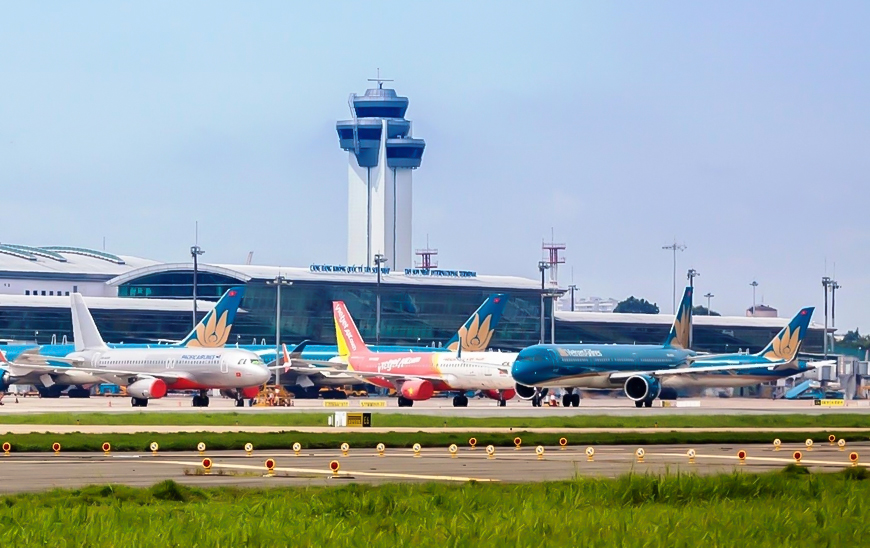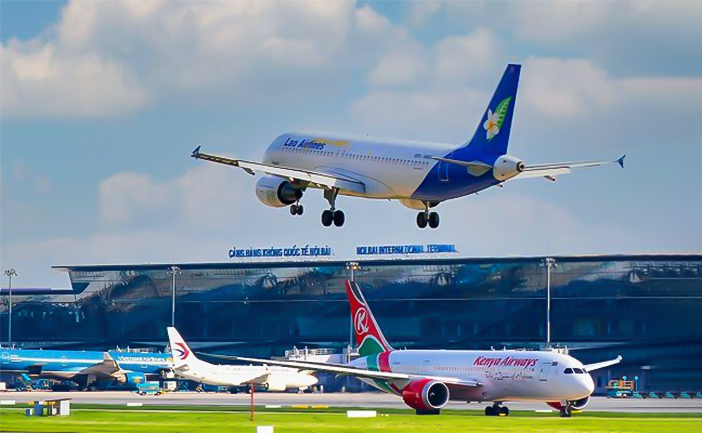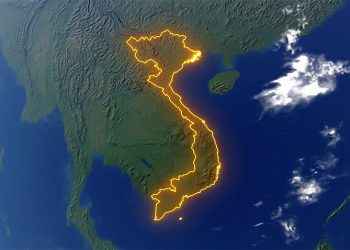How many airports in Vietnam? Vietnam stretches from north to south, and with its rapidly growing economy, the aviation system plays a crucial role in connecting different regions. The extensive network of airports facilitates tourism, commerce, and passenger transport across the country.
Table of Contents
How Many Airports Are There in Vietnam?
As of 2024, Vietnam has a total of 24 airports, including 13 international airports and 11 domestic airports. The airport system in Vietnam is continuously upgrading and expanding to meet travel demands, enhance customer experience, and support economic development.
If military airports are included, the total number of airports in Vietnam rises to around 33. This extensive network allows for efficient passenger and cargo transport throughout the country.
How many International airports in Vietnam?
Currently, Vietnam has 13 international airports, serving as important gateways for connecting Vietnam with the world. Each day, these airports welcome hundreds of thousands of international passengers. With significant economic growth in recent years, Vietnam is seen as a bright spot for investors and tourists, facilitating economic development, tourism, and cultural exchange. Here is a list of Vietnam’s international airports:
| Airport Name | IATA | City | |
| 1 | Noi Bai International Airport | HAN | HaNoi |
| 2 | Tan Son Nhat International Airport | SGN | Ho Chi Minh City |
| 3 | Da Nang International Airport | DAD | Da Nang |
| 4 | Cam Ranh International Airport | CXR | Khanh Hoa – Nha Trang |
| 5 | Phu Bai International Airport | HUI | Hue |
| 6 | Phu Quoc International Airport | PQC | Phu Quoc |
| 7 | Van Don International Airport | VDO | Quang Ninh |
| 8 | Can Tho International Airport | VCA | Can Tho |
| 9 | Lien Khuong International Airport | DLI | Lam Dong – Da Lat |
| 10 | Cat Bi International Airport | HPH | Hai Phong |
| 11 | Phu Cat International Airport | UIH | Binh Dinh |
| 12 | Vinh International Airport | VII | Nghe An |
| 13 | Long Thanh International Airport | under construction, Dong Nai |

Domestic Airports in Vietnam?
Vietnam has approximately 11 domestic airports spread across the country. These airports not only handle domestic flights but also enhance connectivity between regions, making travel more convenient for passengers. Here is a list of domestic airports in Vietnam:
| Airport Name | IATA | City | |
| 1 | Buon Ma Thuot Airport | BMV | Dak Lak |
| 2 | Chu Lai Airport | VCL | Quang Nam |
| 3 | Tho Xuan Airport | THD | Thanh Hoa |
| 4 | Tuy Hoa Airport | TBB | Phu Yen |
| 5 | Con Dao Airport | VCS | Ba Ria – Vung Tau |
| 6 | Dien Bien Phu Airport | DIN | Dien Bien |
| 7 | Rach Gia Airport | VKG | Kien Giang |
| 8 | Ca Mau Airport | CAH | Ca Mau |
| 9 | Pleiku Airport | PXU | Gia Lai |
| 10 | Na San Airport | SQH | Son La |
| 11 | Dong Hoi Airport | VDH | Quang Binh |
Vietnam capital Airport name?
The airport serving the capital of Vietnam is Noi Bai International Airport (IATA: HAN), located in Hanoi. It is the largest international airport in northern Vietnam, handling hundreds of thousands of passengers daily.
On peak days, Noi Bai Airport can accommodate up to 37,000 international passengers and 57,000 domestic passengers. With Vietnam’s rapid economic development in recent years, the infrastructure is continuously being upgraded to support tourism and cultural exchange.

>> Related: Vietnamese currency, Vietnamese currency denominations
Vietnam Airport Rules
Vietnamese airports have several regulations to ensure security, safety, and convenience for passengers. Here are the general rules at Vietnamese airports:
1. Baggage Regulations
Carry-On Baggage:
- Passengers are allowed to bring 7-12 kg of carry-on baggage (depending on the airline).
- Sharp objects like knives, scissors, nail clippers, and liquids over 100 ml are prohibited in carry-on baggage.
- Liquids must be in containers of 100 ml or less and placed in a transparent, resealable plastic bag.
Checked Baggage:
- Passengers are allowed to check in 20-30 kg of baggage, depending on the airline’s policy.
- Items that are flammable, explosive, pressurized, corrosive, or toxic are prohibited from being carried on the aircraft.
2. Security Procedures
- Passengers should arrive 2 hours before a domestic flight and 3 hours before an international flight.
- All passengers must undergo security screening, including checks of carry-on baggage and personal items through scanners at Vietnamese airports.
- Dangerous items such as explosives, weapons, and hazardous materials will be confiscated at security checkpoints.
3. Identification Requirements
For domestic flights, passengers must present one of the following:
- Personal identification
- Valid passport
- Driver’s license
- Party card, press card, or identity certificate with official validation
For international flights, passengers need:
- A valid passport with at least 6 months of validity
- Visa (if required)
4. Special Passenger Regulations
- Children Under 2 Years: Must be accompanied by an adult; airlines usually do not charge for infants under 2 years (free).
- Passengers with Disabilities: Should notify the airline in advance for assistance with wheelchairs or special services.
5. Immigration Procedures
- Passengers arriving in or departing from Vietnam must complete the immigration process at the airport’s immigration counters. Passengers must have a valid passport or visa with at least 6 months of validity.
- There are no specific dress codes.
6. Airline Passenger Rules
- Behavioral Guidelines: Passengers must adhere to airport regulations. Disruptive behavior or non-compliance with airport staff requests may result in flight cancellation or denial of boarding.
- No Smoking: Smoking is prohibited in all public areas of Vietnamese airports, except in designated smoking areas.
- Pets: Pets must be registered and comply with airport regulations.
The Biggest Airport in Vietnam
The largest airport in Vietnam is Tan Son Nhat International Airport (IATA: SGN), located in Ho Chi Minh City. It is the busiest airport in the country, with a capacity to handle 35-40 million passengers annually. Tan Son Nhat Airport is a key aviation hub, facilitating connections between different regions and international destinations.
The Bottom Line
Vietnam is experiencing rapid economic growth, and its airport system is expanding and improving significantly. If you plan to visit Vietnam, it’s helpful to be aware of the international airports to ensure a smooth entry into the country.










